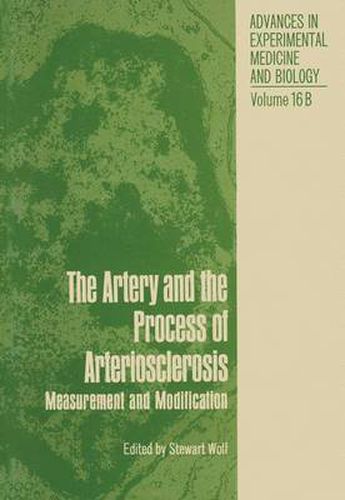Readings Newsletter
Become a Readings Member to make your shopping experience even easier.
Sign in or sign up for free!
You’re not far away from qualifying for FREE standard shipping within Australia
You’ve qualified for FREE standard shipping within Australia
The cart is loading…






This title is printed to order. This book may have been self-published. If so, we cannot guarantee the quality of the content. In the main most books will have gone through the editing process however some may not. We therefore suggest that you be aware of this before ordering this book. If in doubt check either the author or publisher’s details as we are unable to accept any returns unless they are faulty. Please contact us if you have any questions.
Substantial progress toward reconciling disparate theories of the pathogenesis of arteriosclerosis was recorded in Volume I of this book. the proceedings of an interdisciplinary workshop conference held at Lindau. Germany, April 19-25, 1970. Strong evidence was ad duced that the early stages of arteriosclerosis consist of intimal proliferation similar to that associated with the increase in arteri al size and caliber that characterizes normal growth. The findings described recall a theory proposed by Richard Thoma (Thoma and Kaefer, 1889) of Heidelberg toward the end of the nineteenth century. He sug gested that the pathogenesis of arteriosclerosis began with intimal thickening that was initially adaptive. Past a certain point, how ever, the thickening compromised the nutrition of the artery wall, leading inevitably to degenerative changes. In 1944 Hueper (Hueper, 1944), reemphasized the threat to the nu tritional support of the artery and proposed that the many etiologic factors capable of inducing arterial atheroma did so through the final common pathway of interfering with oxidative mechanisms in the vessel wall. Thus, it is proposed that arteriosclerosis is basically an aspect of the behavior of the artery. The nature of the lesion, therefore, depends more on the biochemical and structural response capabilities of the tissue itself than on the characteristics of the various etiologic agents. The idea that arteriosclerosis begins as uncontrolled or disturbed adaptive behavior was shared by Duff and also by Winternitz (Duff, 1954; Winternitz, 1954).
$9.00 standard shipping within Australia
FREE standard shipping within Australia for orders over $100.00
Express & International shipping calculated at checkout
This title is printed to order. This book may have been self-published. If so, we cannot guarantee the quality of the content. In the main most books will have gone through the editing process however some may not. We therefore suggest that you be aware of this before ordering this book. If in doubt check either the author or publisher’s details as we are unable to accept any returns unless they are faulty. Please contact us if you have any questions.
Substantial progress toward reconciling disparate theories of the pathogenesis of arteriosclerosis was recorded in Volume I of this book. the proceedings of an interdisciplinary workshop conference held at Lindau. Germany, April 19-25, 1970. Strong evidence was ad duced that the early stages of arteriosclerosis consist of intimal proliferation similar to that associated with the increase in arteri al size and caliber that characterizes normal growth. The findings described recall a theory proposed by Richard Thoma (Thoma and Kaefer, 1889) of Heidelberg toward the end of the nineteenth century. He sug gested that the pathogenesis of arteriosclerosis began with intimal thickening that was initially adaptive. Past a certain point, how ever, the thickening compromised the nutrition of the artery wall, leading inevitably to degenerative changes. In 1944 Hueper (Hueper, 1944), reemphasized the threat to the nu tritional support of the artery and proposed that the many etiologic factors capable of inducing arterial atheroma did so through the final common pathway of interfering with oxidative mechanisms in the vessel wall. Thus, it is proposed that arteriosclerosis is basically an aspect of the behavior of the artery. The nature of the lesion, therefore, depends more on the biochemical and structural response capabilities of the tissue itself than on the characteristics of the various etiologic agents. The idea that arteriosclerosis begins as uncontrolled or disturbed adaptive behavior was shared by Duff and also by Winternitz (Duff, 1954; Winternitz, 1954).